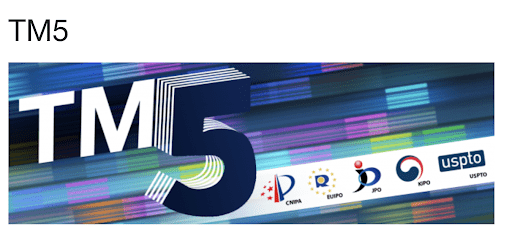When a technology startup company, entrepreneurs, and other businesses begin the trademark or brand selection, adoption, and registration process, a federal intent-to-use trademark application filing in the United States Patent and Trademark Office (USPTO) may be a highly advantageous step in the company’s brand protection strategy. But the USPTO Trademark Office provides several options for federal trademark application filing, all with the same objective and goal in mind, to register a trademark in the USPTO database and enjoy the benefits of federal trademark registration in the United States.
Securing a trademark is a crucial step for businesses looking to protect their brand identity. In the United States, the U.S. Patent and Trademark Office (USPTO) offers various filing bases for trademark applications, one of which is the Intent to Use (ITU) filing basis. This option is particularly beneficial for businesses that have not yet started using their trademark in commerce but plan to do so in the near future. At L.A. Tech and Media Law Firm, we provide expert guidance on trademark registration, including the Intent to Use trademark filing basis, to ensure your brand is protected from the outset.
Difference Between Use-in-Commerce and Intent-to-Use Trademark
The USPTO divides all federal trademark applications into two categories. One category is the Use-in-Commerce Application, also known as a UIC Application, or a Section 1(a) Application. The other category is an Intent-to-Use Application, also known as an ITU Application, or a Section 1(b) Application. There are several distinctions between these types of federal trademark applications, and the decision to select one or the other involves a myriad of legal and business considerations.
The black letter law on Federal Trademark Applications requirements in the United States Patent and Trademark Office with respect to Use in Commerce Applications and Intent to Use Applications are as follows:
Use-in-Commerce Basis – § 1(a)
Filing under a Use-in-Commerce Basis involves filing under Section 1(a) of the Trademark Act. This basis means that the owner is currently using that mark in commerce and the priority date of the application will be the mark’s first use in commerce.
15 U.S.C. § 1051(a), better known as Section 1(a) of the Trademark Act of 1946, sets out the requirements for a brand owner to file a trademark application under a Use-in-Commerce Basis. The applicant must:
- Submit a verified statement that the mark is in use in commerce;
- Specify the date of the applicant’s first use of the mark anywhere on or in connection with the goods or services;
- Specify the date of the applicant’s first use of the mark in commerce; and
- Submit one specimen for each class, showing how the applicant uses the mark in commerce.
Intent-to-Use Basis – § 1(b)
Filing under an Intent-to-Use Basis will be a Section 1(b) filing. To file under this Section, a brand owner must demonstrate a clear intent to use their mark in commerce in the near future.
15 U.S.C. § 1051(b), or Section 1(b) of the Trademark Act of 1946, sets forth the requirements for a brand owner to file a trademark application under an Intent-to-Use Basis. The applicant must submit a verified statement that the applicant has a bona fide intention to use the mark in commerce. If the verified statement is submitted after the initial filing of the application, the statement must also state that the applicant had a bona fide intention to use the mark in commerce as of the application filing date.
Prior to obtaining registration, the applicant must follow up with a filing of an Allegation of Use. This can be either an “amendment to allege use” under 15 U.S.C. § 1051(c) or a “statement of use” under 15 U.S.C. § 1051(d) that demonstrates that the mark is in use in commerce. This must include dates of use, the filing fee for each class, and one piece of evidence demonstrating use of the mark for each class.
The Benefits of Intent to Use Trademark Applications
There are certain benefits to a brand owner filing under § 1(b) of the Trademark Act. The most important of which is that filing under § 1(a) requires a showing that the mark has actually been in use in commerce, while a § 1(b) filing does not.
This is important to technology startups with a new product or service that is pre-launch because if a similar mark already exists, filing under § 1(a) may expose the new applicant to trademark infringement liability. It is essentially an admission that the alleged infringing mark has been used in commerce and that can be used against the brand owner filing the application. § 1(b) filings make no such admission. The brand owner has not shown any actual use in commerce, which is a requirement for trademark infringement liability.
Entrepreneurs, technology startups, and brand owners considering filing Use-in-Commerce Section 1(a), and Intent-to-Use Section 1(b) Trademark Application are well-advised to consult with an experienced technology trademark lawyer in Los Angeles to determine which federal trademark application basis is most beneficial to their brand protection strategy.
What is an Intent to Use Trademark Filing Basis?
Definition and Purpose
An Intent to Use (ITU) filing basis is a declaration by the applicant that they have a bona fide intention to use the trademark in commerce in the near future. This option allows businesses to secure their trademark rights before they actually begin using the mark in commerce. The ITU filing basis is particularly useful for startups and businesses in the planning or development stages, providing them with the legal framework to protect their brand as they prepare to launch their products or services.
Legal Framework of Intent To Use Trademark Applications
The ITU filing basis is governed by Section 1(b) of the Trademark Act. To file an ITU application, the applicant must have a genuine intention to use the trademark in commerce. This intention must be supported by evidence, such as business plans, marketing materials, or product prototypes. The ITU application process allows businesses to secure an early filing date, which can be crucial in establishing priority over potential competitors.
Benefits of an Intent to Use Trademark Filing Basis
Early Filing Date
One of the primary benefits of an ITU application is securing an early filing date. This date establishes the applicant’s priority in claiming trademark rights, even before the mark is actually used in commerce. This can be a significant advantage in the event of disputes or challenges from other parties who may attempt to register a similar mark.
Flexibility and Preparation Time
The intent-to-use trademark filing basis provides businesses with the flexibility and time needed to prepare for the commercial launch of their products or services. Once the ITU application is filed, businesses have up to six months to file a Statement of Use (SOU) demonstrating actual use of the trademark in commerce. This period can be extended up to five times, giving businesses a total of three years to commence use.
Legal Protection and Brand Development
By filing an intent-to-use trademark application, businesses can begin building and developing their brand with the assurance that their trademark rights are protected. This legal protection allows businesses to invest in marketing, product development, and other preparatory activities without the fear of losing their trademark to a competitor.
The Intent-To-Use Trademark Application Process
Filing the Intent To Use Trademark Application
The first step in the ITU process is filing the trademark application with the USPTO. This application must include a clear and accurate description of the trademark, the goods or services it will be used with, and a declaration of the applicant’s bona fide intention to use the mark in commerce. It is essential to provide accurate and comprehensive information to avoid delays or complications during the examination process.
Examination by the USPTO
Once the ITU application is filed, it will be examined by a USPTO trademark examining attorney. The examiner will review the application to ensure it complies with all legal requirements and does not conflict with existing registered or pending trademarks. If any issues are identified, the examiner will issue an Office Action outlining the concerns and requesting additional information or amendments.
Notice of Allowance
If the ITU application passes the examination, the USPTO will issue a Notice of Allowance (NOA). This notice indicates that the trademark is allowed for registration, but the applicant must now demonstrate actual use in commerce. The applicant has six months from the date of the NOA to file a Statement of Use (SOU), which can be extended if additional time is needed.
Statement of Use
The Statement of Use (SOU) is a crucial step in the ITU process. It provides evidence that the trademark is being used in commerce in connection with the specified goods or services. The SOU must include specimens showing actual use of the mark, such as product labels, packaging, or marketing materials. Upon approval of the SOU, the trademark will be registered, and the applicant will have full legal protection for their mark.
Challenges and Considerations
Maintaining Bona Fide Intent
Maintaining a bona fide intent to use the trademark in commerce is essential throughout the ITU process. The USPTO may request evidence of this intent at any time, and failure to provide sufficient proof can result in the denial or cancellation of the application. It is crucial to keep detailed records of business plans, marketing efforts, and other activities that demonstrate a genuine intention to use the mark.
Timely Filing and Extensions
The ITU process requires careful attention to deadlines and timely filing of the Statement of Use or extension requests. Missing deadlines can jeopardize the application and result in the loss of trademark rights. Businesses should work closely with their legal counsel to ensure all filings are submitted promptly and accurately.
Protecting Your Brand with an ITU Filing Basis
The Intent to Use trademark filing basis offers significant advantages for businesses looking to secure their trademark rights before commencing use in commerce. By providing an early filing date, flexibility, and legal protection, the ITU trademark process allows businesses to develop their brand with confidence. At L.A. Tech and Media Law Firm, we are committed to helping businesses navigate the complexities of trademark registration, including the Intent to Use filing basis. Contact us today to learn how we can assist in protecting your brand and securing your trademark rights.



